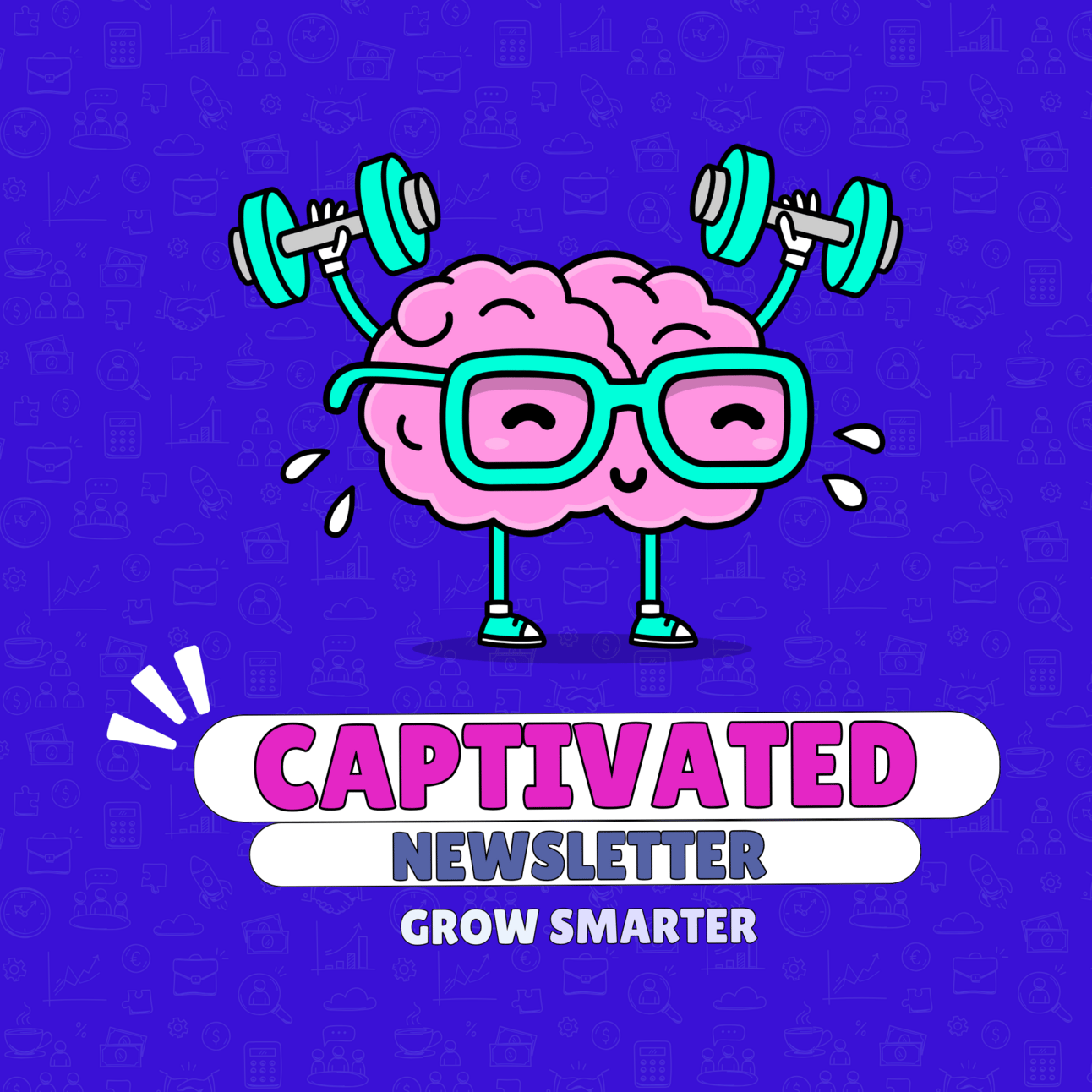
CAPTIVATED: unlocking what makes people tick, click, and buy, with psychology-backed, consumer behavior growth tips to 10X sales in 10 minutes
Today’s Edition of Captivated: How Headspace Built a $3B Habit with Brain Science (Part 1)
“Just breathe.”

It sounds simple. But for most of us, stillness is one of the hardest things to stick with.
Then came Headspace. And suddenly meditation didn’t feel like a vague wellness goal, it felt doable. Even a bit addictive.
They definitely didn’t invent meditation. But they helped reinvent how it was framed, felt, and formed into habit.
And that shift changed everything...
~~
May is Mental Health Awareness Month, so Captivated is going full zen - but like, the product growth kind...
All month, we’re spotlighting brands turning wellness into a want-to, not a have-to, helping people feel better, live better… and yeaa, buy more stuff while they’re at it (with brain-science you can leverage of course).
(continues below).
🧠 SMART TOOLS YOU CAN USE: FROM OUR SPONSORS
Get Your Free Out-of-Home Advertising Plan That Adds Real-World Marketing To Your Mix
Your marketing is missing one critical channel: OOH Ads.
Digital Ad Fatigue is real. You’re missing valuable exposure where your target audience lives, works, and plays.
You probably think dealing with all of the vendors or knowing which is a good billboard is overwhelming.
OneScreen has your back.
Our media planning experts does all of the work, using 100+ data sources to plan, execute and measure the right mix of OOH ads like billboards, transit ads and more.
Look like the marketing rockstar we know you are by adding impactful, data-driven OOH ads that can be measured to ROI results.
Get a free OOH plan and see what is possible with OneScreen.
🎧 Rather Listen than Read?
Scroll all the way to the top and click: Listen Online
🧭 INSIDE THIS EDITION
📈 DID YOU KNOW?
Headspace has over 70 million downloads and was valued at $3B.
🤔
.. What’s the Big Deal? ..
Meditation has always been free. But free doesn’t mean easy.
Before Headspace, the idea of meditating came with a lot of baggage:
Do I need to sit cross-legged?
Am I doing it wrong?
What if I get distracted?
How do I even start?
Headspace stripped all that away. It made meditation feel safe, normal, and flexible. It used soft colors, calming visuals, and short, friendly voiceovers to ease people in. It didn’t shame you for skipping a day. It invited you back in.
The first time you open the app, you’re not asked to commit to 20 minutes. You’re asked to try 1.
That’s how you make people feel like they can actually succeed. And when they feel like they can succeed, they stick around.
With their meditation app, Headspace re-engineered how stillness is positioned, felt, and practiced, and turned it into more of a daily ritual.
🧠
.. Brain Science-Backed: The Psychology Behind It ..
1. 🧠 MICRO-HABIT FRAMING:
Headspace removed the pressure by shrinking the ask. “Just one minute” feels achievable, which lowers resistance and builds consistency.
2. 🧠 COMMITMENT DEVICES:
Streaks, daily reminders, and progress visuals build a gentle form of accountability. But it never feels punishing. The tone is always kind, not competitive.
3. 🧠 ANTICIPATED REWARD:
Dopamine isn’t just released when you complete something, it actually starts building with anticipation. Headspace triggers that pre-reward loop through animations, sounds, and predictable rituals.
4. 🧠 EMOTIONAL SAFETY:
The UX is designed to feel nonjudgmental. This lowers cortisol and anxiety, so users associate the product with peace, not pressure.
5. 🧠 IDENTITY FORMATION:
Over time, users stop saying “I’m trying to meditate” and start saying “I’m someone who meditates.” Headspace makes you feel proud of that identity shift.
🥷
.. Steal this Strategy for Yourself ..
1 - Reduce the First Step:
Shrink your entry point. Instead of a big Call to Action like “Get Started Now,” try: “Take 60 seconds to try it.”
Example: Offer a mini version of your product or service. Just a taste. The goal is to lower the user’s apprehension.
2 - Build Gentle Commitment Loops:
You don’t always need to gamify with badges and streaks. You can create light routines or visible progress.
Example: Use checklists, daily content, or celebratory nudges like “You did it! Want to try again tomorrow?”
3 - Use Emotionally Calming Design:
Fonts, colors, tone, even animation speed; all affect how stressed or safe someone feels.
Example: Swap harsh reds and black text for soft blues, rounded icons, and light illustrations.
4 - Simplify Choices:
Help people feel like they belong to something aspirational.
Example: Say “Welcome back, meditator” instead of “Welcome back, [user].” Let people wear the identity.
✌
.. tl;dr & captivated wrap-up ..
Headspace made meditation easy. They made it feel safe. Habit-forming. Personal.
They used psychology-backed design to reduce friction, increase emotional safety, and reframe meditation as something that starts small and sticks.
When you make people feel capable, calm, and seen, they keep coming back.
And that’s a lesson for all of us selling any product, app, or service.
🧠 SMART TOOLS YOU CAN USE: FROM OUR SPONSORS
Grow smarter: Reallocate ad spend, boost ROAS with affiliates
Ad spend keeps climbing. ROAS? Not so much.
The smartest Amazon sellers aren’t spending more—they’re spending smarter.
The Affiliate Shift Calculator models what could happen if you reallocated a portion of your ad budget into affiliate marketing.
Built for sellers doing $5M+ on Amazon.
You’re doing great. And you are appreciated.
Keep calm, carry on, and captivate!
👋 Until next time,
Profit Nic



